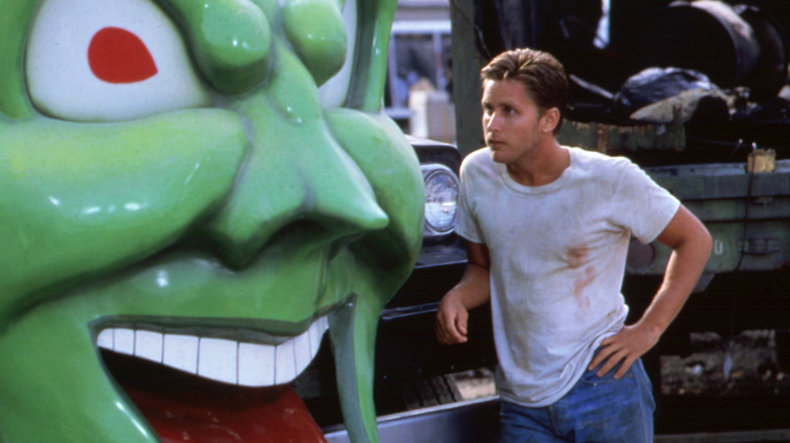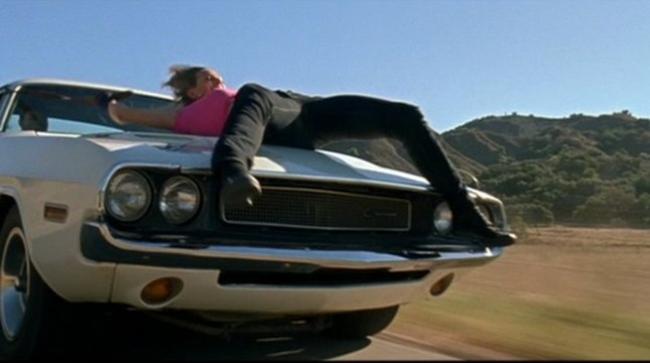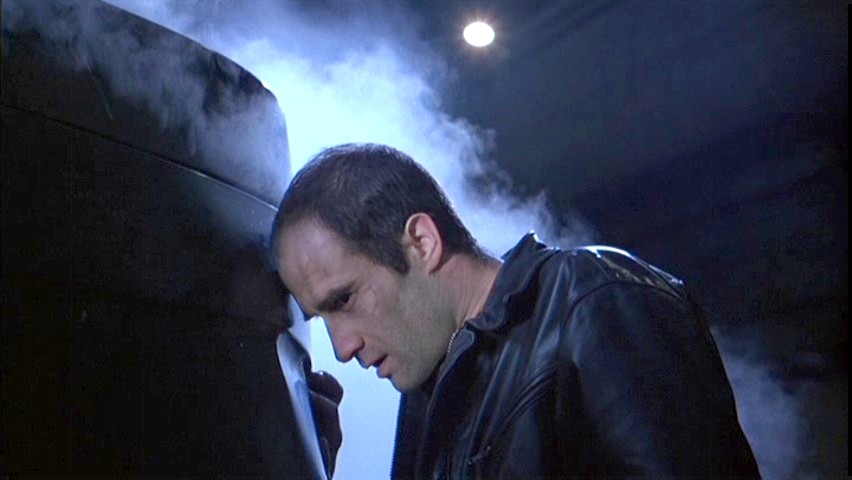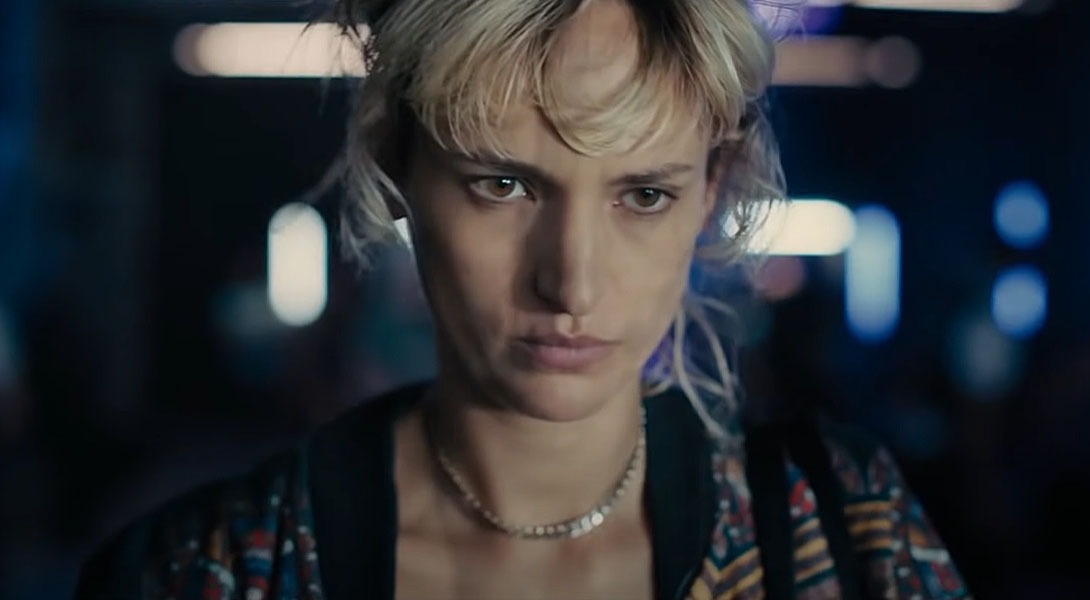6. Maximum Overdrive (1986)

Between “Duel” and “Maximum Overdrive”, at least twenty movies about killer vehicles have been released. You had killer bulldozers and killer hearses. You had cars driving on their own, and lunatics behind the wheel. Cars possessed by the devil, and vehicles that started acting on their own because of the fallen meteor. If there was a person who could’ve killed the subgenre for good (could’ve, as it is still pretty much alive nowadays, after all, we had to see killer ambulances), then surely it should be one of the greatest contributors to it.
Stephen King can make anything scary, from fridge to laundry press. Still, he utilized the killer car concept quite often. In 1972, prior to his literature stardom, King published a dark and gruesome short story “Trucks”. The story focuses on a gas station, where the main characters hide from the trucks that, driven by an unknown force, run amok killing humans. The story culminates with the potential enslavement of humans, whose sole purpose becomes fueling the trucks.
In 1986, Stephen King decided to make his directorial debut by adapting “Trucks”. The final product, “Maximum Overdrive”, starring Emilio Estévez, with King himself making a cameo, intentionally or not feels more like a comedy. The films tanked at the box office and became a critical dud.
Stephen King has called “Maximum Overdrive” a moronic movie and vowed never to direct again. The disastrous results of the film didn’t kill the killer car subgenre, but they were rarely given theatrical release after 1986, and mainly went straight to video.
7. Death Proof (2007)

His name is stuntman Mike, and he’s a psychotic killer who stalks women in his death-proof car. That’s the basic premise of Quentin Tarantino’s “Death Proof”. Released as a double feature “Grindhouse”, together with Robert Rodriguez’s “Planet Terror”, the movie received a lukewarm response from critics and audiences alike. Stateside, “Grindhouse” failed to recoup its $50 million budget. Possibly, because “Death Proof”, a slow-burning piece, was placed after a fast-paced and action-packed “Planet Terror”. Internationally, “Death Proof” and “Planet Terror” were released separately, and the former fared much better than the latter.
For quite a long time, movies about killer cars didn’t feature the masculinity aspect of driving. Tarantino, however, turns the subgenre into a tale of sexism and toxic masculinity. Stuntman Mike, brilliantly portrayed by Kurt Russel, cast against type, is a monster behind the wheel of his car, but taken out of his vehicle, he’s not that much of a menace.
8. Christine (1983)

“If you are not very careful, your possessions will possess you” sang Marina on her 2010 single “On, No!”. The source material for John Carpenter’s “Christine”, Stephen King’s novel of the same name, is filled up with songs about cars that hint at what’s going to happen in every chapter.
The basic premise of “Christine” novel and film are the same. Nerdy Arnie falls in love with Christine — a 1958 Plymouth Fury, which leads to his strange metamorphosis. Soon, it turns out that Christine can well operate on its own, killing everyone who can stand in between her and Arnie.
Adapting a beast of a book like “Christine” — 530 or 750 pages, depending on the edition that you pick — into a two-hour movie is impossible without certain deviations. The film mainly remains faithful to its source material, except for several aspects.
Both the book and the film are coming-of-age horror stories. In both of them, there’s a connection between adulthood/masculinity and car ownership. Arnie is a nerd, constantly bullied by everyone around, until he finds Christine, and becomes kind of a bully himself.
In the book, Christine is possessed by the spirit of its former owner, but the film abandons this subplot, making Christine evil on its own, arguably for better results. Arnie becomes that “I have a car, I am the king of the world” type of guy. And the movie emphasizes that one should be careful about their possessions, as they tend to start leaving on their own, simply finding a new owner.
9. Crash (1996)

If you google the word “symphorophilia”, you will learn that it’s a paraphilia that involves sexual arousal from staging and/or observing traffic accidents. In many ways, that’s what J.G. Ballard’s novel “Crash” and its adaptation by David Cronenberg is about. The movie follows James Ballard, played by James Spader, as he gets involved with the cult of famous car crash reenactors.
Cars are no longer means of transportation. They are no longer obsessions, either. Cars are the extensions of ourselves. They can be used as genitalia as well, which makes traffic accidents a perfect metaphor for sexual intercourse. David Cronenberg is a godfather of body horror, but in “Crash” he takes a different approach. In many ways, “Crash” owns to Shinya Tsukamoto’s “Tetsuo: The Iron Man”, but instead of presenting viewers with an actual amalgamation of man and the machine, Cronenberg does that metaphorically.
10. Titane (2021)

Julia Ducournau’s “Titane” comes as a savage hybrid of “Crash” and “Christine”. The movie follows Alexia, who has problems with affection. She’s in love with her car. But any human who wants to get romantically involved with her ends up dead. And it’s not the car killing them, but Alexia herself. She ends up getting pregnant by car and has to change her identity to save the child.
“Titane” offers a critical view on three generations and their attitude toward technology. Boomers treat technology as mere equipment. Millennials are obsessed with it. They prefer learning things from the internet, rather than experiencing them on their own. It’s more about the image, than about reality. Zoomers must represent a perfect balance between the two. Maybe Alexia’s child can change things for the better.